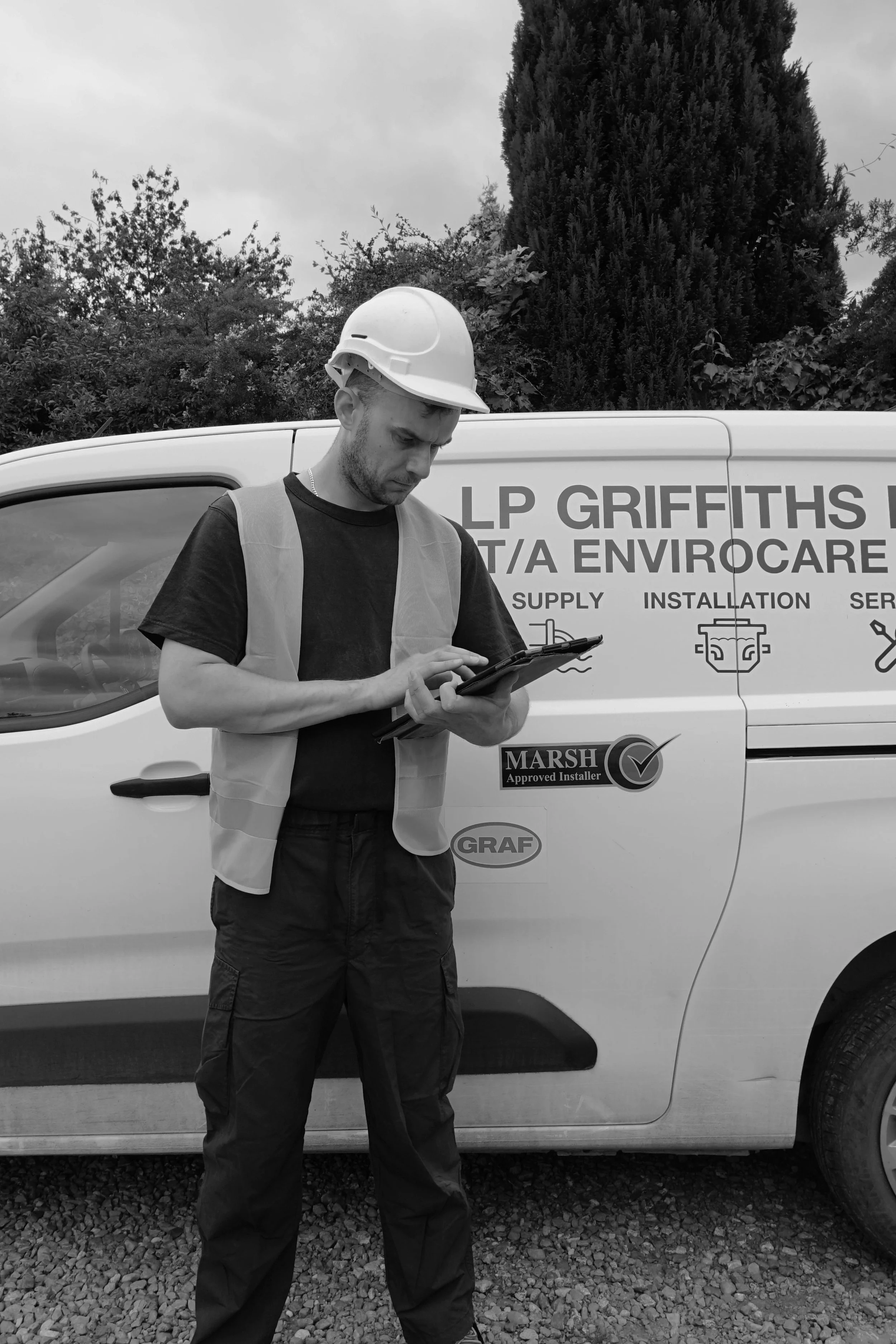
Resources & FAQ’s
Your trusted off mains drainage solutions partner.
FAQs
-
A septic tank works by separating solids and liquids. The liquids are filtered into a separate chamber that allows for wastewater to drain away into a soakaway (drainage field). The remaining sludge is broken down and requires regular emptying. Septic tanks do not require electricity.
A treatment plant uses biological processes to treat wastewater to a high standard so that it can be discharged into a watercourse such as a stream. Treatment plants require electricity to operate and emptying as per the manufacturer guidelines which varies by model and size.
A cesspool is for storage only. Wastewater from your property is held in a cesspool before being taken away for treatment.
-
A drainage field disperses the partially treated, settled sewage, via an underground pipe system to ground, allowing purification to be completed.
-
A soakaway is a drainage system below ground that manages surface water by allowing it to gradually release into the surrounding soil.
-
A septic tank should be desludged (emptied) annually.
A treatment plant should be desludged (emptied) as per the manufacturer guidelines. The frequency can vary depending upon the model and size.
A cesspool should be emptied when it reaches capacity. Some models are fitted with an alarm system to prevent overfilling.
The disposal process should always be carried out by a registered waste carrier. The waste should be transferred to a registered licensed disposal site with the appropriate waste transfer documentation that should be retained for a minimum of 3 years.
Waste transfer quotes are available from Envirocare Off Mains. Contact us to find out more.
-
A legally binding set of rules which clarifies the type of discharge required from your septic tank or small sewage treatment plant.
-
Complete an Home Owners drainage survey, this will clarify the majority of issues that are required to confirm compliance. Contact us to learn more.
-
Firstly you must determine why the system does not comply. Then you can consider if the system can be upgraded or if a replacement system be required. There are a number of options available to rectify your waste water system contact us to learn more.
-
If your property is served by a septic tank, you are required to confirm if it meets Environment Agency regulations / binding rules.
-
Yes, this will reduce any complications when the property is ‘under offer’, the estate agent should outline the Environment Agency binding rule requirements.
-
Installation would take around 5-7 working days to complete depending on the scope of the project.
-
Yes, the unit would be installed as a traffic-able area in accordance with the manufacturer's recommendations and installation procedure.
-
Yes, in most instances you will need planning permission. However, if you are replacing an existing system you may not need permission but you would need to comply with all relevant building regulations. We can help.
Further questions and advice
There is plenty of advice available on oil storage and installation. Please don’t be afraid to ask a question, even if you feel the question may be irrelevant. It could just save you time and money in the long run.
Do not use guesswork on oil storage or installation. Please ask us for advice; we are here to assist you.
With all queries on oil storage and installations, contact us directly, or a suitably qualified / registered installer, directly for advice.
The images on this website are not intended to be, and should not be used as, installation advice or recommendations.
Downloads
-

Is Septic Tank compliant?
Learn more about the Environment Agency Binding Rules and if your septic tank is compliant with the current guidelines.
-

Caring for your sewage treatment plant, septic tank or pump station
A useful guide highlighting how to care for your wastewater treatment system.
-

Wastewater odours troubleshooting guide
Are you experiencing foul odours from your wastewater system? Use this guide to troubleshoot potential issues.
